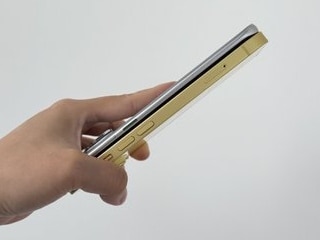- Home
- Science
- Science News
- Pulsar Fusion’s Nuclear Fusion Rockets May Revolutionise Space Travel
Pulsar Fusion’s Nuclear Fusion Rockets May Revolutionise Space Travel
Pulsar Fusion has introduced Sunbird, a nuclear fusion-powered rocket that could significantly cut space travel time.

Photo Credit: NASA
Pulsar Fusion aims to develop nuclear fusion rockets for faster solar system travel.
A UK-based company has announced plans for nuclear fusion-powered rockets that could reduce travel time across the solar system. Pulsar Fusion has been working on the project in secrecy for a decade and recently introduced the concept at the Space-Comm Expo in London. The company aims to test the technology this year and conduct an orbital demonstration by 2027. The rockets, called Sunbirds, are designed to propel spacecraft at high speeds using nuclear fusion. Experts believe that if the technology works, it could transform space exploration. However, some remain sceptical about its feasibility.
Technology Behind the Sunbird Rockets
As reported, the rockets will use a Duel Direct Fusion Drive (DDFD) engine. This system is designed to generate thrust by fusing deuterium and helium-3. Unlike conventional fusion reactors, the DDFD would produce charged particles that could be directly used for propulsion. The company claims that this technology could cut the journey to Mars in half and reduce the travel time to Pluto to just four years. However, the fusion process has not yet been successfully tested in space.
Challenges and Expert Opinions
In an interview with Live Science, Paulo Lozano, an astronautics professor at the Massachusetts Institute of Technology, expressed doubts about the project. He stated that fusion technology remains complex and has not yet been mastered for compact systems like these rockets. Richard Dinan, CEO of Pulsar Fusion, responded by saying that fusion in space is easier to achieve because the vacuum eliminates many of the challenges faced on Earth. The company plans to test the propulsion system this year, though initial trials will use inert gases instead of helium-3 due to its high cost.
Future Plans and Potential Hurdles
Pulsar Fusion hopes to create a fleet of Sunbird rockets that can be reused multiple times. These rockets would be stationed in orbit and attach to spacecraft, helping them reach deep space. This approach could lower costs for long-distance missions. However, one of the biggest challenges is sourcing helium-3, which is rare and expensive. Some experts suggest that mining helium-3 from the Moon could be a solution, but no such plans are in place yet. The company has not set a timeline for when a fully functional Sunbird prototype will be ready.
For the latest tech news and reviews, follow Gadgets 360 on X, Facebook, WhatsApp, Threads and Google News. For the latest videos on gadgets and tech, subscribe to our YouTube channel. If you want to know everything about top influencers, follow our in-house Who'sThat360 on Instagram and YouTube.
Related Stories
- Samsung Galaxy Unpacked 2025
- ChatGPT
- Redmi Note 14 Pro+
- iPhone 16
- Apple Vision Pro
- Oneplus 12
- OnePlus Nord CE 3 Lite 5G
- iPhone 13
- Xiaomi 14 Pro
- Oppo Find N3
- Tecno Spark Go (2023)
- Realme V30
- Best Phones Under 25000
- Samsung Galaxy S24 Series
- Cryptocurrency
- iQoo 12
- Samsung Galaxy S24 Ultra
- Giottus
- Samsung Galaxy Z Flip 5
- Apple 'Scary Fast'
- Housefull 5
- GoPro Hero 12 Black Review
- Invincible Season 2
- JioGlass
- HD Ready TV
- Laptop Under 50000
- Smartwatch Under 10000
- Latest Mobile Phones
- Compare Phones
- OnePlus Ace 5 Racing Edition
- OnePlus Ace 5 Ultra
- Realme GT 7 Dream Edition
- Realme GT 7T
- Alcatel V3 Ultra 5G
- Alcatel V3 Pro 5G
- Alcatel V3 Classic 5G
- Red Magic 10S Pro+
- Acer Swift Neo
- Asus ExpertBook P3 (P3606)
- Honor Pad 10
- Xiaomi Pad 7 Ultra
- Xiaomi Watch S4 15th Anniversary Edition
- iQOO Watch 5
- Haier 43 Inch QLED Ultra HD (4K) Smart TV (43H6E)
- Haier 55 Inch QLED Ultra HD (4K) Smart TV (55H6E)
- Asus ROG Ally
- Nintendo Switch Lite
- Haier 1.6 Ton 5 Star Inverter Split AC (HSU19G-MZAID5BN-INV)
- Haier 1.6 Ton 5 Star Inverter Split AC (HSU19G-MZAIM5BN-INV)

















